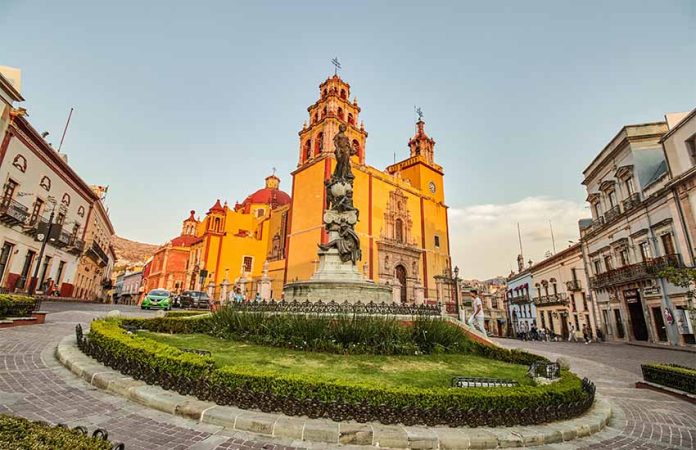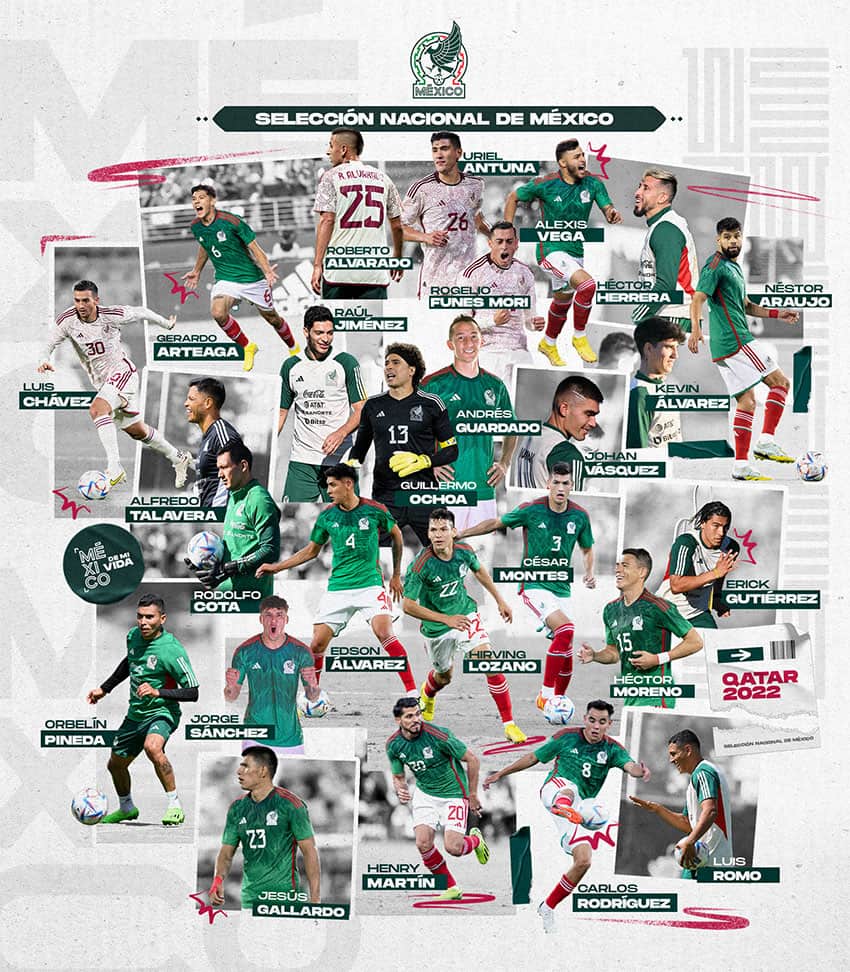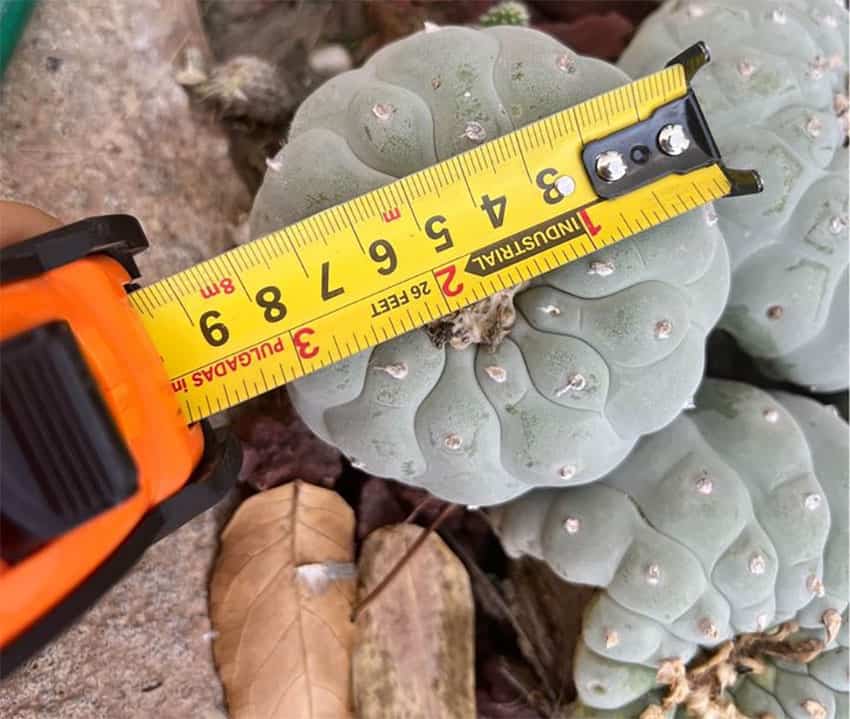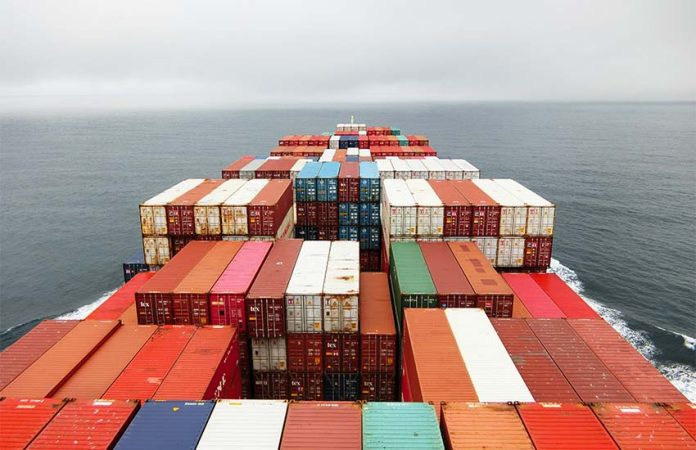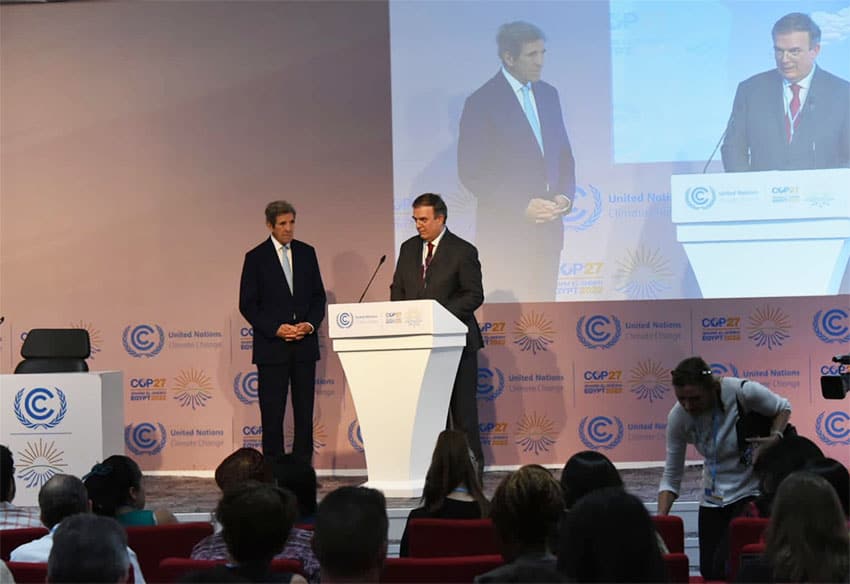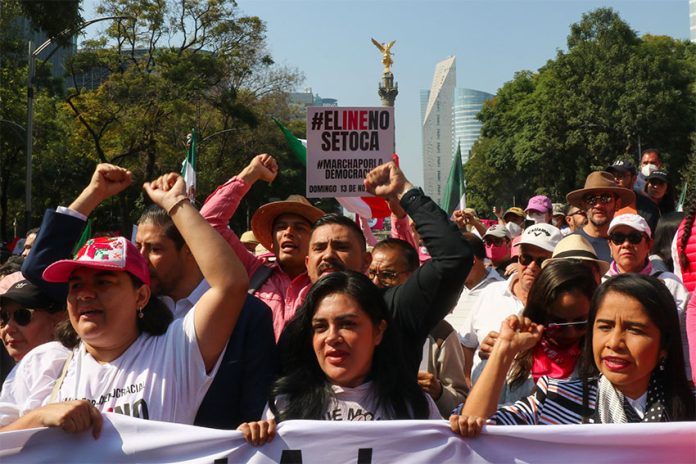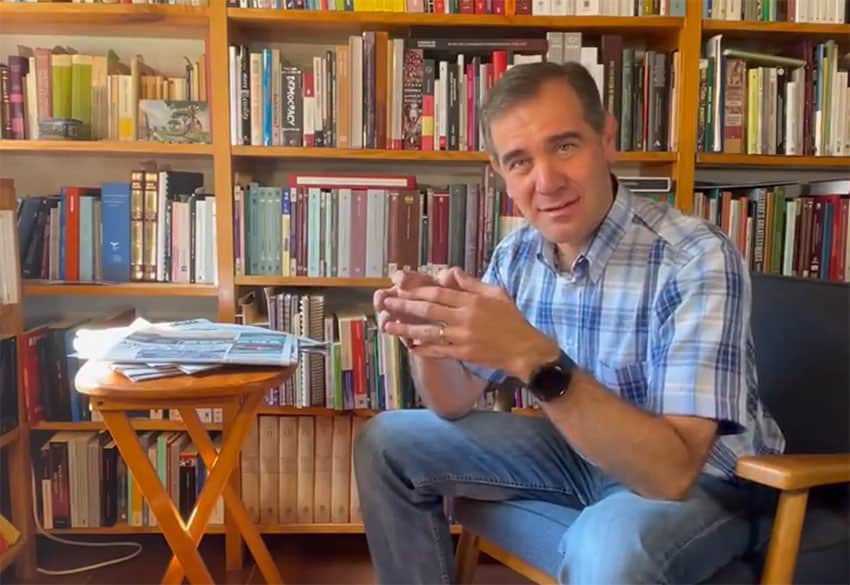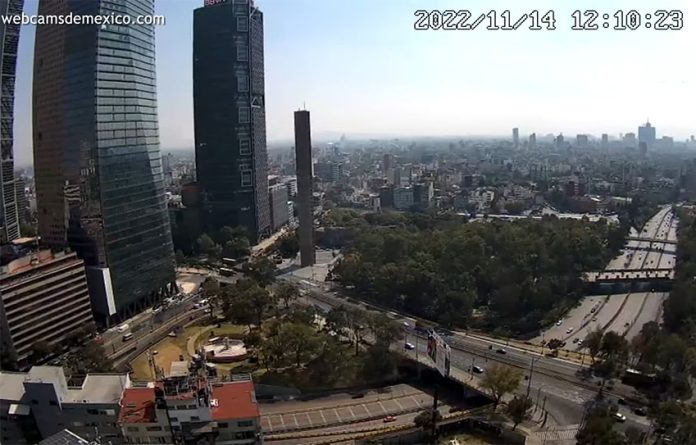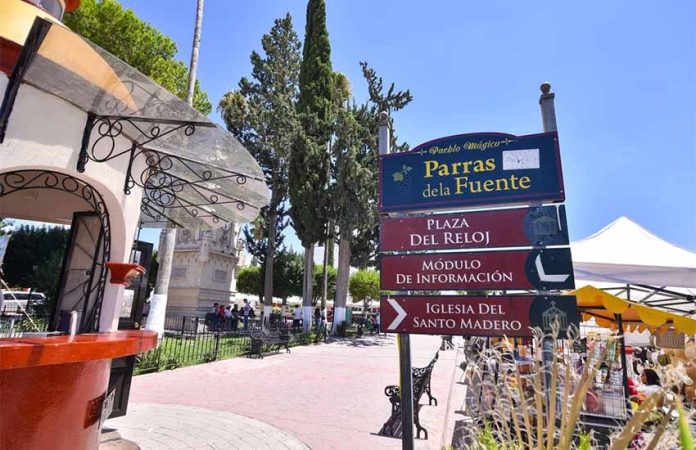Home of the Cervantino festival, the city where insurgents turned the tide of Mexican Independence and once the silver capital of the Americas, Guanajuato city has a lot of charm and a lot of history to offer visitors. But of late, it’s becoming more than just a quaint, historical day trip. With upscale boutique hotels and high-end dining and drinking, the town is attracting more and more of those moneyed tourists that their mayor clamored for back in 2018.
That said, this is still a college town at heart, and if dark and divey is your vibe, you can find plenty of possibilities for philosophy discussions and old-school rock-and-roll here as well. Here’s a list of some great new (and some classic) bars for a night out in the state’s most up-and-coming dining and drinking scene.
La Notaría
Find it here.

Just steps from the city’s famed Juárez Theater is the La Notaría bar, atop the La Notaría hotel. It’s a bit of climb to the third floor with no elevator, but the view is worth it as you look out over the city from the chic blue-and-gray couches in the lounge.
Mellow dance music plays in the background while you sip on a signature cocktail like the Red Dragon — made with vodka, vermouth, and caramelized hibiscus flowers and dusted with Tajin chile powder. Or try a Mezcal Chillen with chile serrano mezcal, cucumber, lime and ginger salt.
It’s totally Instagram-worthy here, with an ancient stone wall that serves as the bar’s balcony. However, the glass barrier around the rooftop, while probably keeping you safe, makes photos a tad complicated. Instead, just sink into one of the boxed-in seating areas and breathe in the lavender.
Antigua 13
Find it here.
One of the best rooftop bars, Antigua 13 has a more bohemian vibe than La Notaría, while still being fancy enough to wear something slinky or bring your in-laws for brunch.
Down a tiny alley near the famous Callejón del Beso, the spectacular rooftop view — featuring Guanajuato University, La Basilica and El Templo de la Compañia churches as a backdrop — is what draws people in. The full menu, mostly Mexican fare, includes some great fish tacos and aguachiles.
In the mood for a night out with a group of friends? There is a small covered area for a private party of about 10 people, whimsically lit with golden Christmas lights. Alternatively, with lots of little corners to enjoy a cocktail, this bar’s fancy-but-friendly feel makes a perfect intimate date-night location.
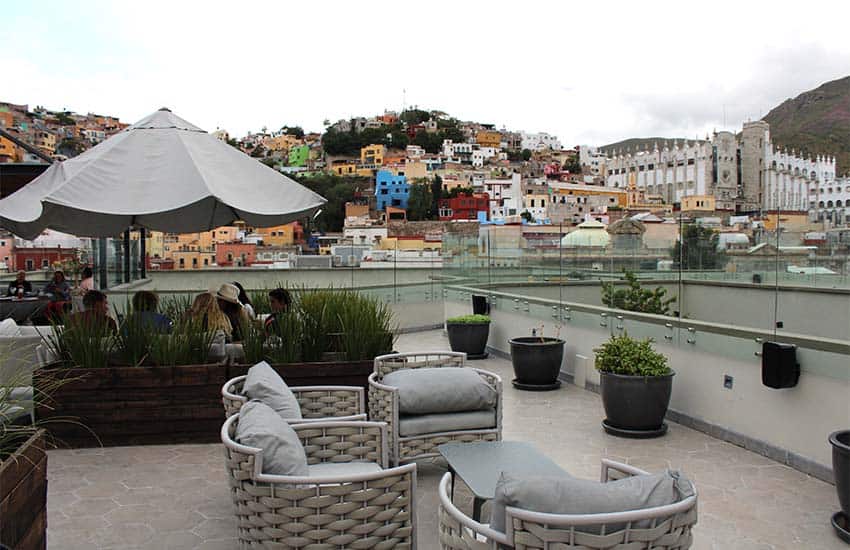
One Bar & Lounge
Find it here.
Also atop a hotel — the design-focused 1850 Hotel Boutique — the One bar is more dance party than easygoing hangout spot. It’s perfect for a DJ’ed night out of music and loud conversation. You can’t beat the view, which looks out over the city’s picturesque main plaza — which itself is always bustling with wandering musicians, outdoor diners and loads of tourists.
Iridescent neon-lit tables and chairs seem to almost float around the One Bar’s terrace, and the cocktail menu is a mix of classics — like a heavy-poured old-fashioned — and house-made mixes that sound like recipes for a nasty headache in the morning (The Miami Vice – pineapple, rum, curacao, strawberry and vodka, for example). There’s also bottle service for more than 60 types of alcohol.
There’s a small dining menu, but with surprisingly hefty options like fettuccine or grilled tuna steak.
Golem
Find it here.
For anyone who wants a bar that’s a little more dark and divey, try Golem. It looks innocuous from the street — just another collection of rooms that leads to rooms that leads to rooms, but this bar is actually atop of one of the city’s famous historic tunnels – built toward the end of the 1800s to control flooding.
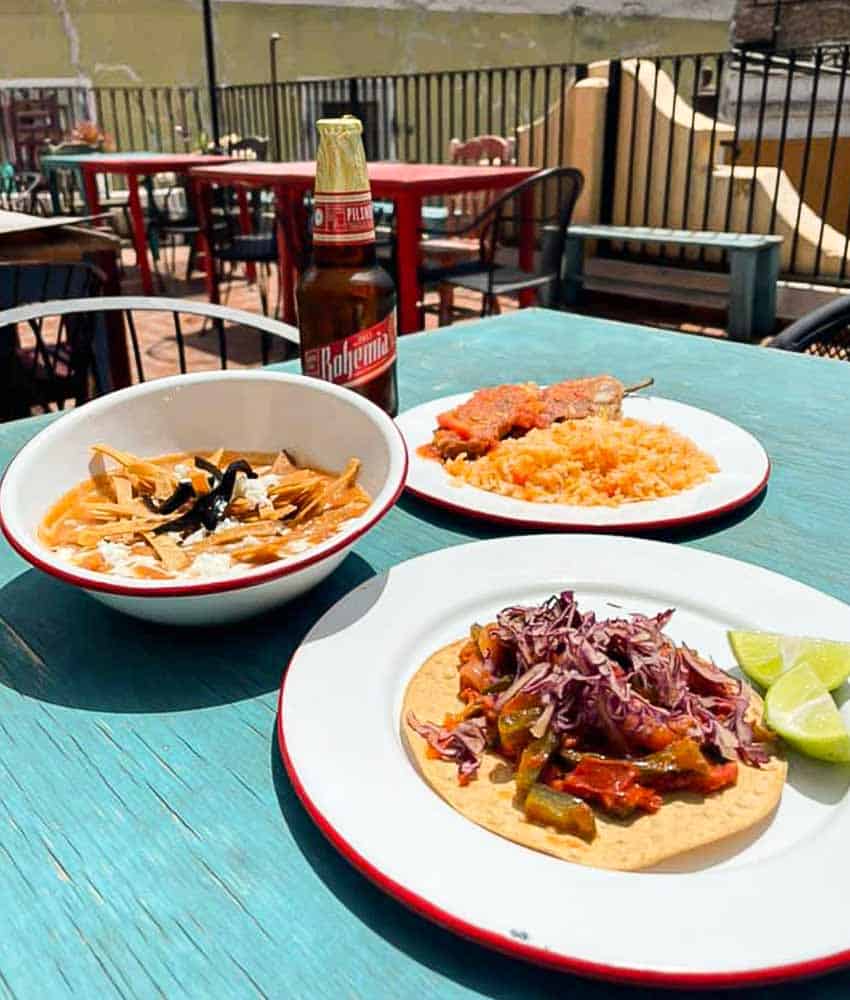
Over the years, many of the tunnels’ bridges became houses or, in this case, a cool bar with weird mannequins in the window and patrons that wear shirts that say things like “Got Clorox?”
Feel free to sit out on the narrow balcony that overlooks the tunnel and experience the city’s history with a cheap beer or mezcal in hand.
Pulques “El Guiso”
Find it here.
If you rather keep your feet on the ground and deeply rooted in authentic Mexican culture, right off of the city’s main plaza is a tiny pulque bar called El Guiso, where you’ll find a massive mural of the naked pulque goddess on the wall and young, hip drinkers in the half-dozen seats that fit around the bar, imbibing this fermented Mesoamerican alcoholic beverage to Mexican rock.
The Beer Company Guanajuato
Find it here.
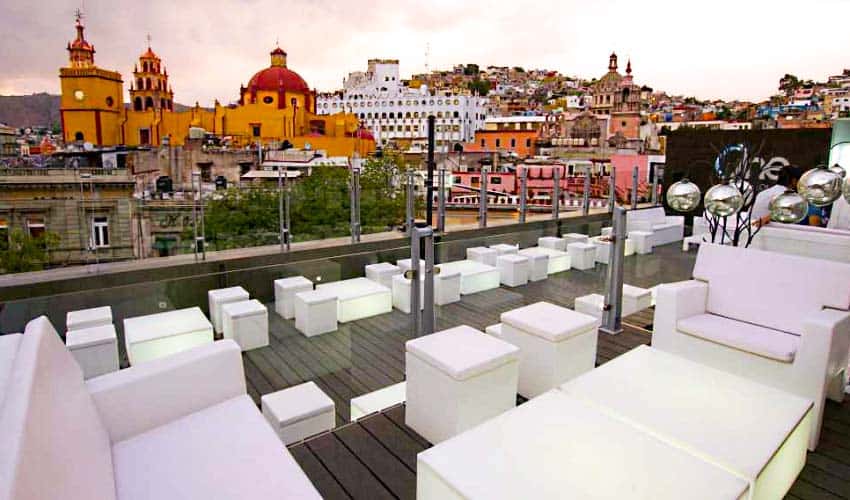
This is a chain bar, with locations in multiple states in Mexico, but it does a good job nonetheless at providing a taste of homegrown brews. For some local craft beer, try this tall, skinny three-story bar that includes a rooftop terrace.
Try an Allende or Dos Aves beer (made in San Miguel de Allende), or a Chelalibre (made in Celaya), or a Panorámica beer (made in Guanajuato). This is also a cozy spot to watch a sports game, with TVs mounted in all directions and a view overlooking the Plaza Allende.
Plaza Rock Bar
Last but definitely not least, this place has a college-bar vibe with its classic rock-and-roll on the stereo and black-clad kids huddled in the corners discussing politics, an eclectic collection of wall hangings, posters, chandeliers and weird art surrounding them.
There are several rooms to tuck yourself into here, but the best seats are outside, on a quaint plaza in the middle of downtown Guanajuato, where you can watch the world go by while enjoying an oversized gin-and-tonic or a cold Modelo-brand beer. We included no address because it’s so off the radar, it doesn’t even show up on Google Maps, but you can find it at the Plaza del Baratillo across from the fountain.
- Know of any great bars in Guanajuato city we missed? Feel free to add to our list and share your favorites in the comments.
Lydia Carey is a freelance writer and translator based out of Mexico City. She has been published widely both online and in print, writing about Mexico for over a decade. She lives a double life as a local tour guide and is the author of Mexico City Streets: La Roma. Follow her urban adventures on Instagram and see more of her work at www.mexicocitystreets.com.
